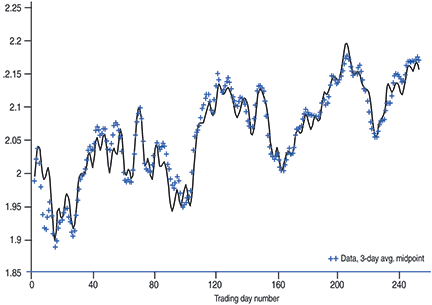NEW TECHNIQUES
Automated Trade Signals
Market Reactivity
Interpret what the market is saying by using some sound techniques.
The market reactivity system, which can be applied to both stocks and commodity futures, is automated to provide computer-generated trade signals, largely eliminating trader judgment and the associated psychological pitfalls.
My research on trading the futures markets started 25 years ago, when I delved into technical analysis to develop a trading strategy based on the underlying formation of market behavior. The result was an indicator that took a broader measure of the market, combining price data, trading range, and trading volume, and tying the result to an underlying cyclical market structure. By taking all this into account and applying the indicator to three or more different cycle lengths, it proved to be an effective system. Further, the indicator proved to be robust in that it could adapt to changing market conditions.
Early on, it was clear that trading success had three basic requirements: a sound method, good money management, and a suitable mindset. The first two could be addressed analytically; the third, at least equally important, could not. So even with a system with an analytical basis and a set of rules, its application did not produce good results for the majority of traders. Applying indicators requires judgment, and judgment in a high-stakes activity is affected by psychological factors.
I attempted to automate the market reactivity system in order to eliminate, or at least reduce, the judgment factor. But I could not find a way that produced better results. In recent years, however, the markets have continued to become more complex, more volatile, and less cyclical, and I began working on it again. This time, I gained new insight into a way to make it work.
The first thing I looked for in the development of the trading system was a structure upon which to build. Market response to fundamental factors is primarily a matter of trader/investor sentiment, and neither sentiment nor supply/demand changes are entirely random.

Figure 1: fitting market price to harmonic series. Here you see the analytical solution composed of a combination of cycles fitted to the actual behavior.